Illuminated antiphonal leaf c.1285 Queen Esther kneeling before King Ahasuerus
£6,000.00
Queen Esther Kneeling before King Ahasuerus in a historiated initial on a leaf from a large illuminated manuscript Antiphonary in Latin
[Italy (Emilia-Romagna or Umbria?), late 13th century (c.1285–95)]
A single parchment leaf, 485 × 360 mm, with seven lines of text in rounded gothic script and music in square notation on four-line red staves, the text comprising: the end of the Judith antiphon ‘Domine deus rex omnipotens libera …’, the beginning of the Esther response ‘Domine rex omnipotens indictione tua …’, followed by the verse ‘Exaudi orationem nostram …’ and the response ‘Conforta me rex sanctorum …’, with A LARGE HISTORIATED INITIAL ‘D’ depicting King Ahasuerus, enthroned and with his feet on a green cushion, extending his rod to touch the head of Esther, who kneels before him; the upper margin with a post-medieval folio number ‘XXX’ in red, the two responses marked in the adjacent margins ‘1’ and ‘2’ (and ‘II’); with insignificant creases in the lower margin, overall in fine condition.
Text
In the Divine Office, there were daily biblical readings according to the liturgical season (Advent to Epiphany, Epiphany to Lent, and so on). After Corpus Christi (about two months after Easter) there were a variable number of summer weeks until the next Advent (because the dates of both Easter and Advent vary), and the daily readings were taken from the Old Testament books of Kings, Wisdom, Job, Tobit, Judith, Esther, Maccabees, and Ezekiel. The readings from Judith were used from the first Sunday after 20 September, and if this occurred early enough in the month, the Judith readings would be followed by those from Esther, as represented by the present leaf.
Illumination
The origin of this leaf is hard to determine. The predominantly blue and orange palette looks Bolognese at first sight, but this does not fit with the figure style, so it may be from elsewhere in Emilia-Romagna. The form of the white ornament on the blue background is typical of Umbria, however, so an origin further south is another possibility. The figures give a sense of three-dimensional volume (see, for example, the way in which the roundness of Ahasuerus’s thigh and buttock is suggested by the way in which he sits on his own cloak, and the sweeping darker green lines that give volume to his foot-cushion).
The subject of the initial is found in Esther, chapter 5 verse 2. Chapters 1–4 relate that the Persian king Ahasuerus banished his wife Vashti for disobedience, and selected Esther (who kept her Jewishness secret) as her replacement. Mordechai, Esther’s cousin, learned of a plot by Haman, one of Ahasuerus’s men, to kill all the Jews in the empire. Mordecai therefore asks Esther to use her position to intercede with the king. She reveals to him that she is Jewish, and successfully petitions him to save the Jews. The crucial moment is when she presents herself to him, ‘And when he saw Esther the queen standing, and she pleased his eyes, and he held out toward her the golden sceptre, which he held in his hand, and she drew near’.
Be the first to review “Illuminated antiphonal leaf c.1285 Queen Esther kneeling before King Ahasuerus” Cancel reply
Product Enquiry
Related products
Illuminations
C12th - C13th manuscripts
Beautiful painted white vine initial, Augustine’s Commentary on John’s Gospel, Italy C12th
C12th - C13th manuscripts
C12th - C13th manuscripts
Glossed Bible leaf reused as a binding in French archive. France (doubtless Paris), 13th century.

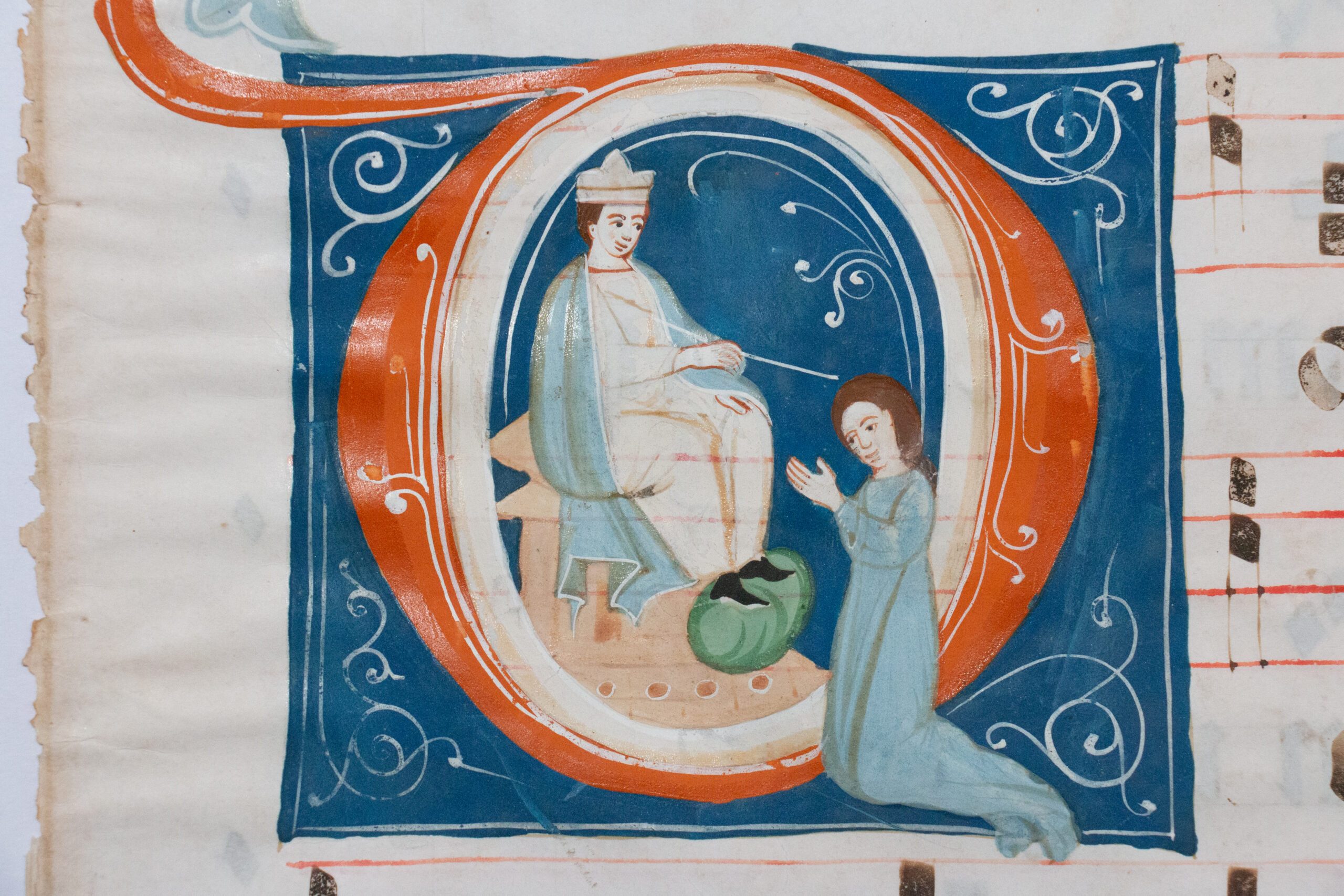
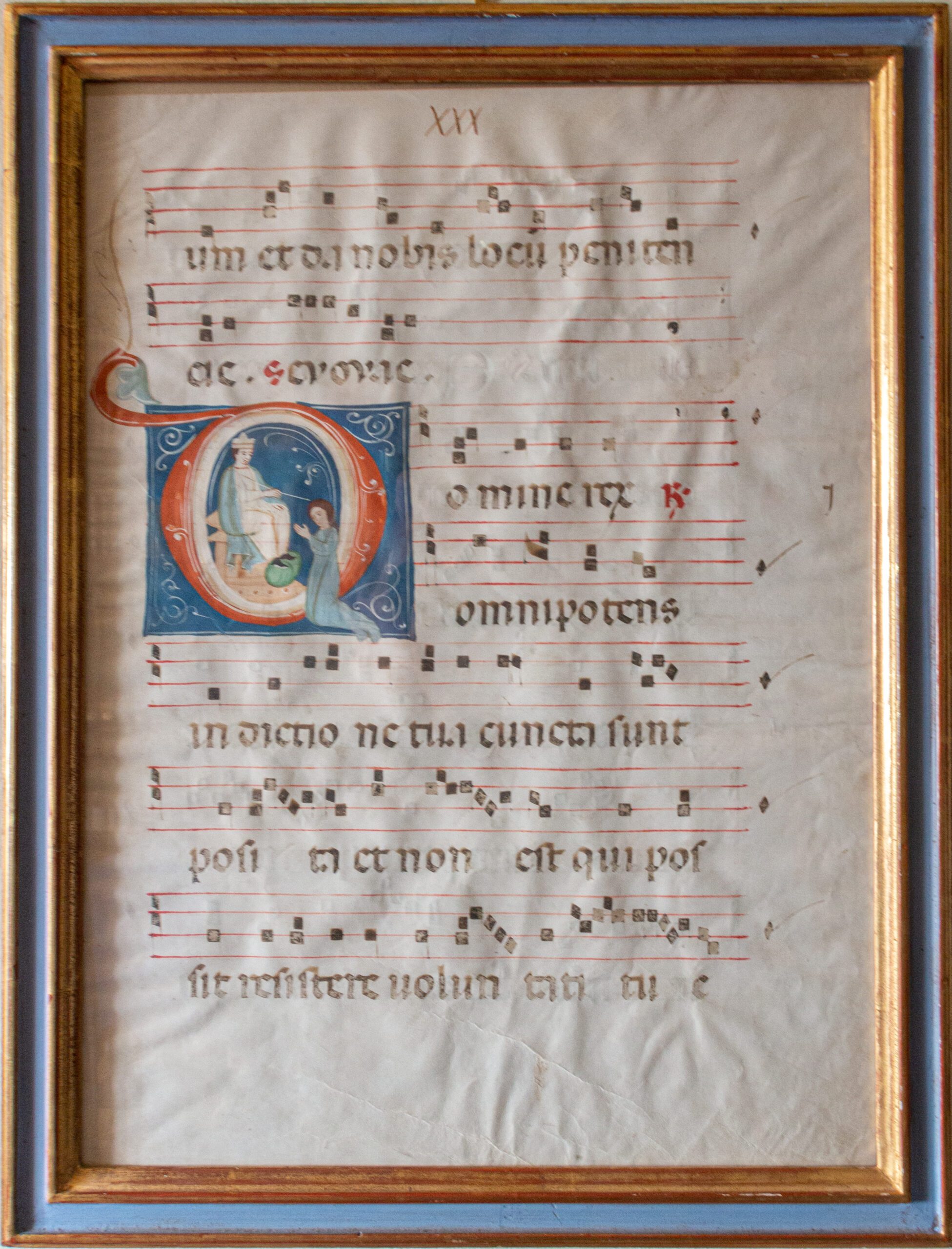
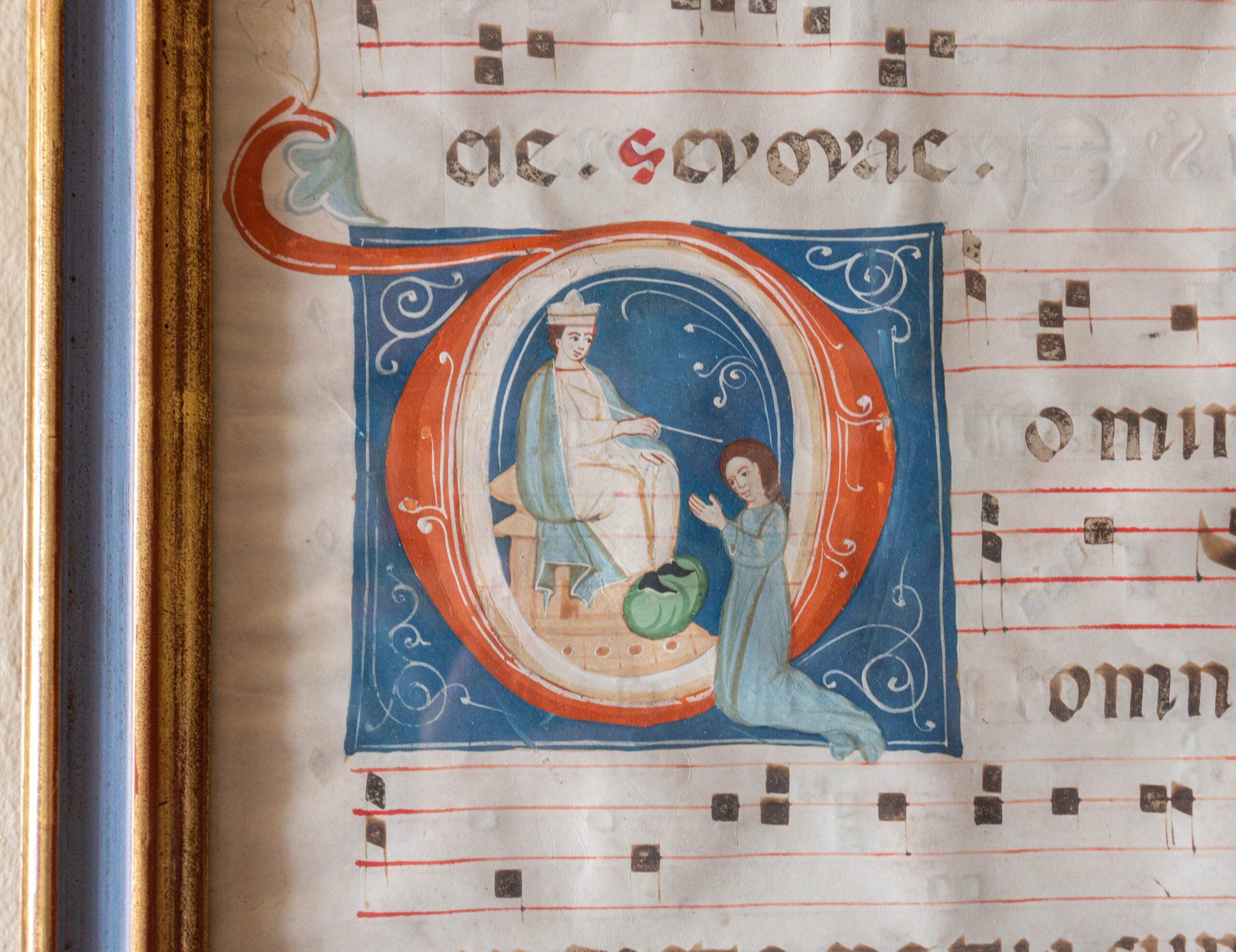
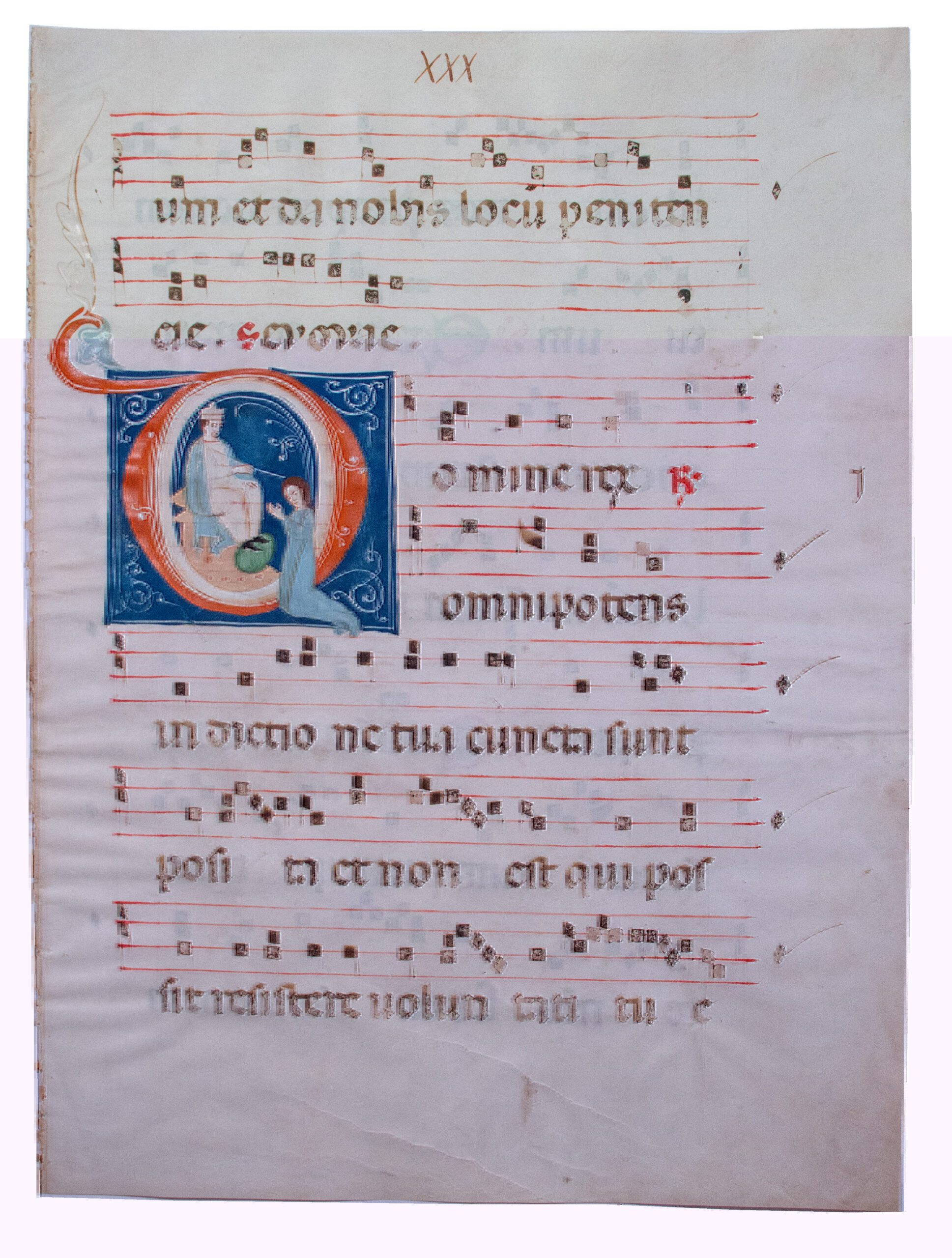
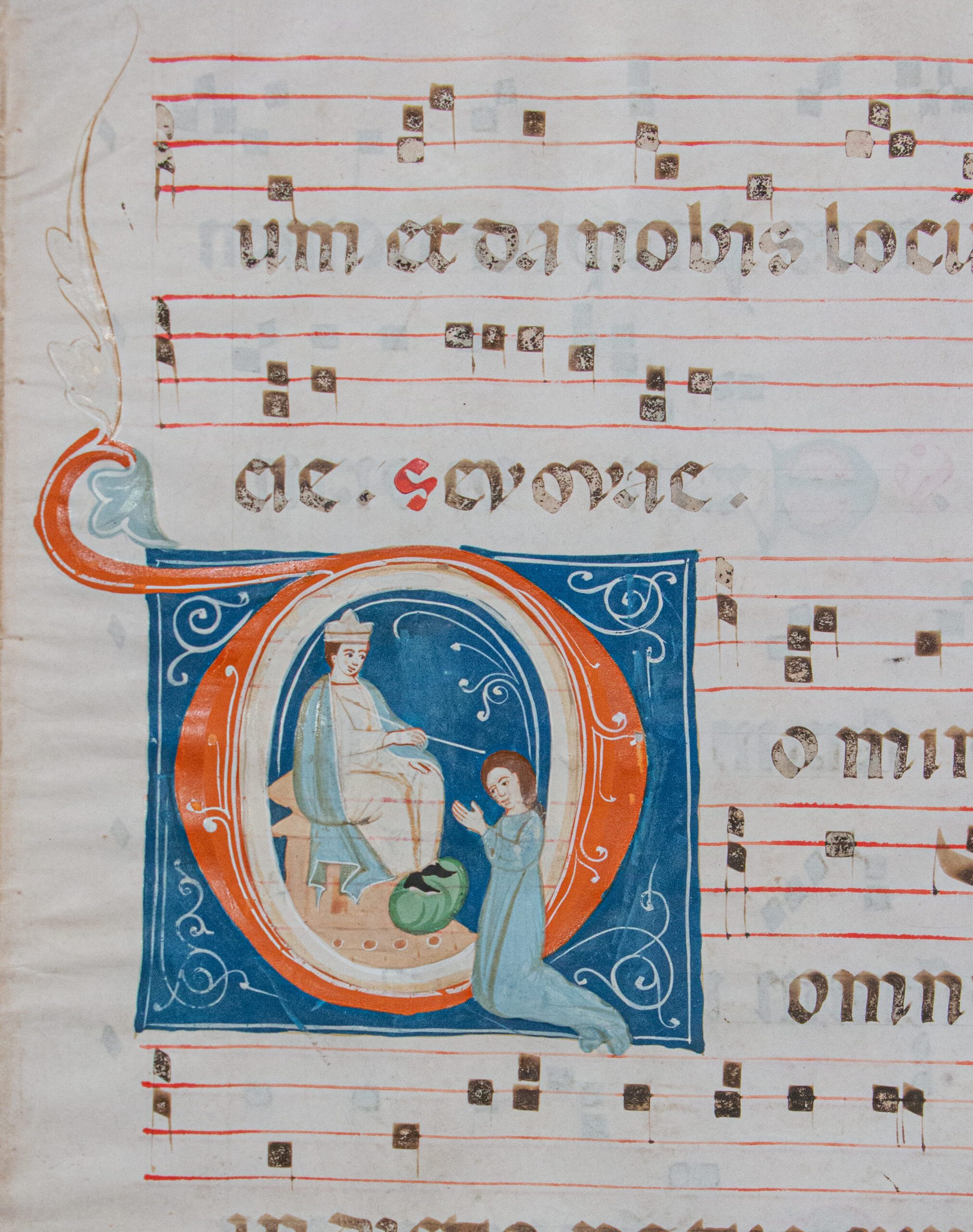
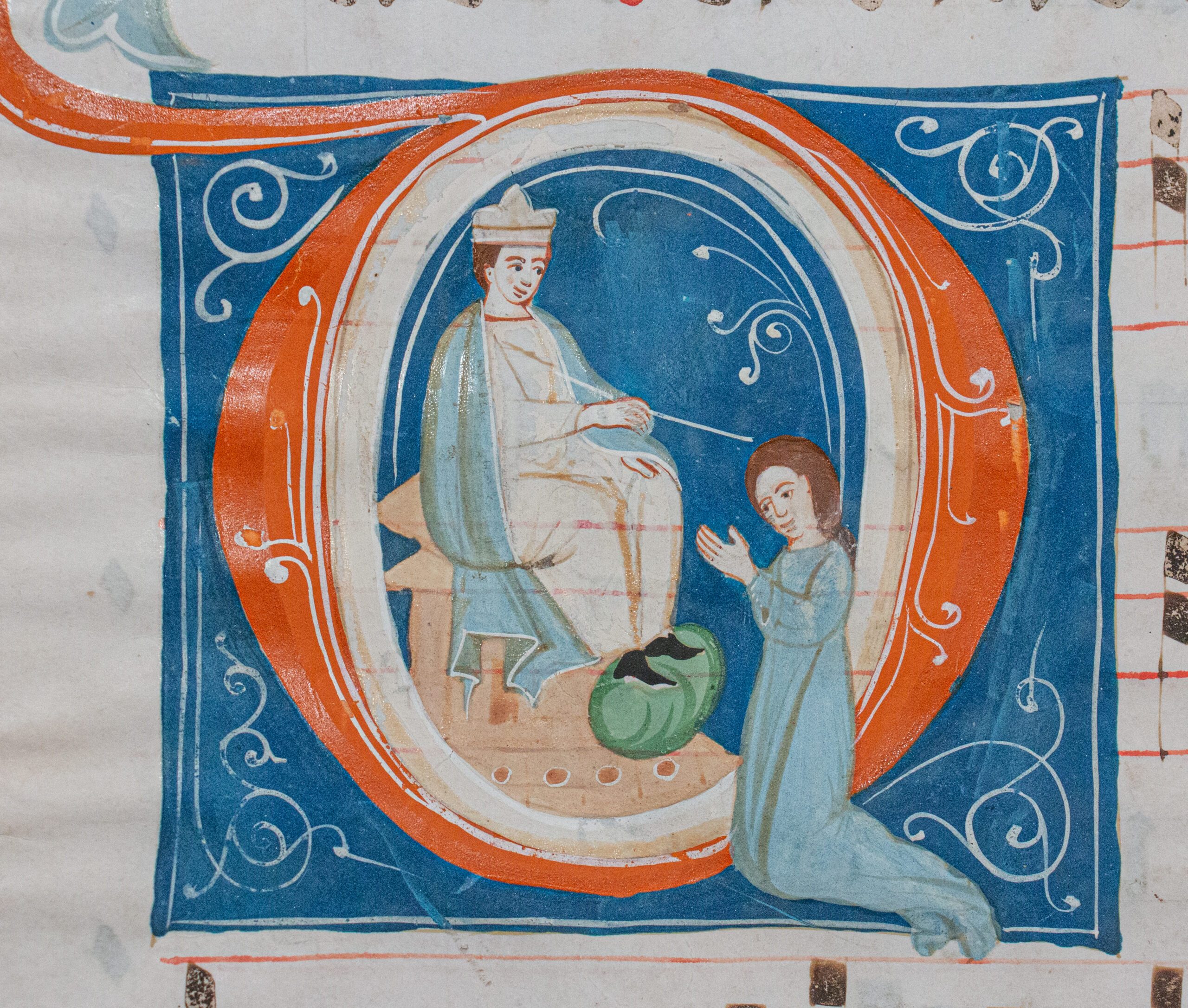
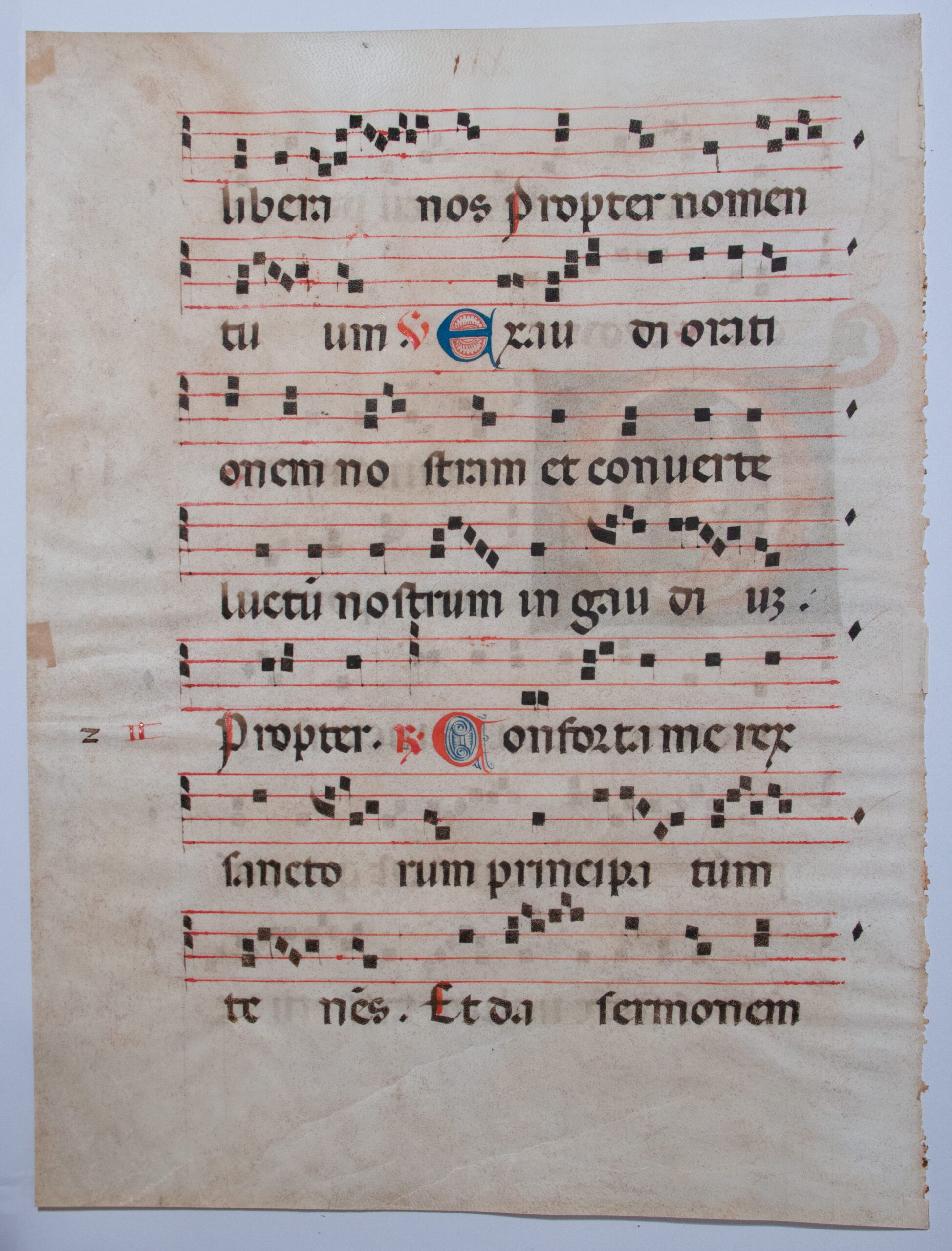
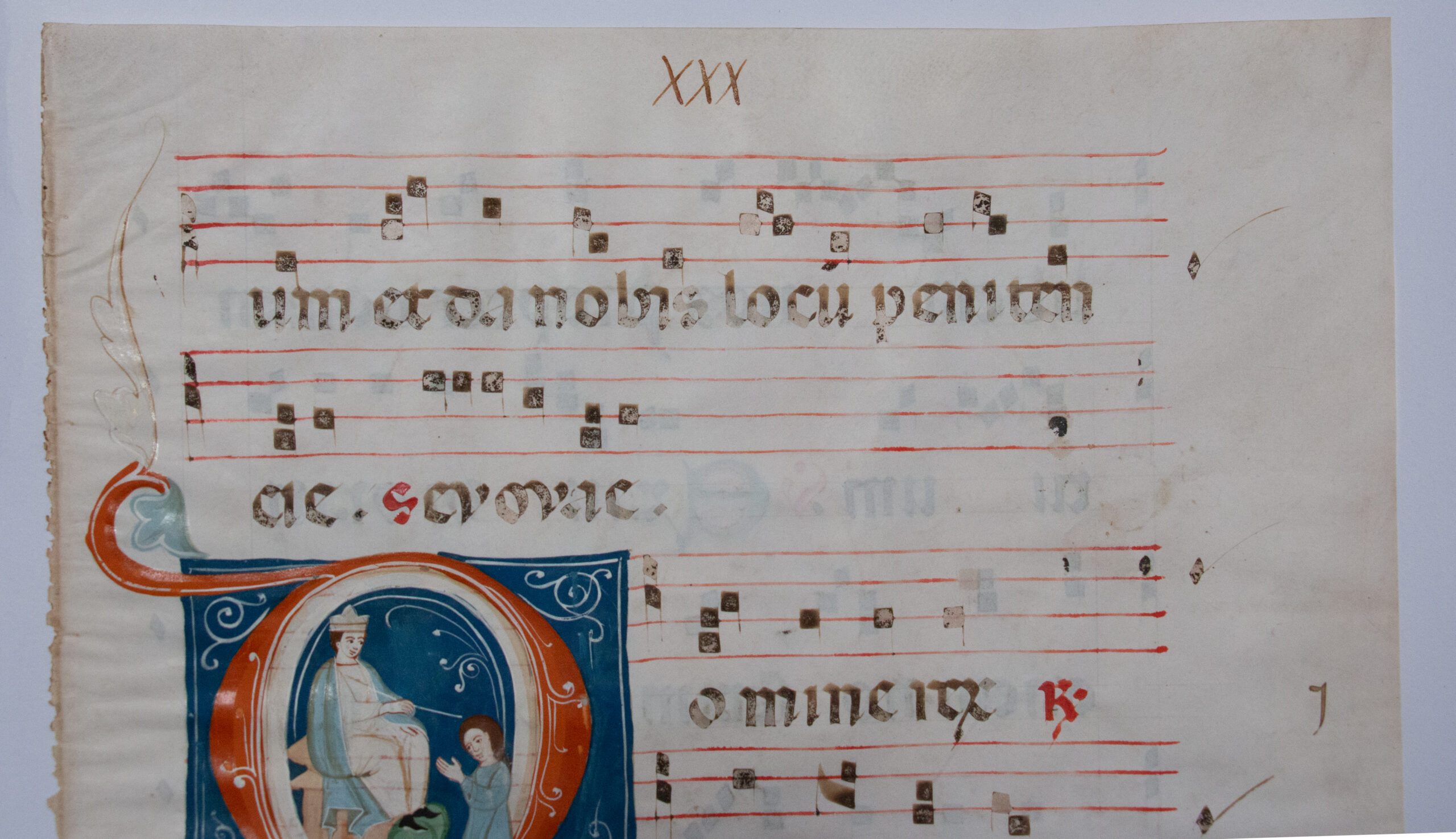
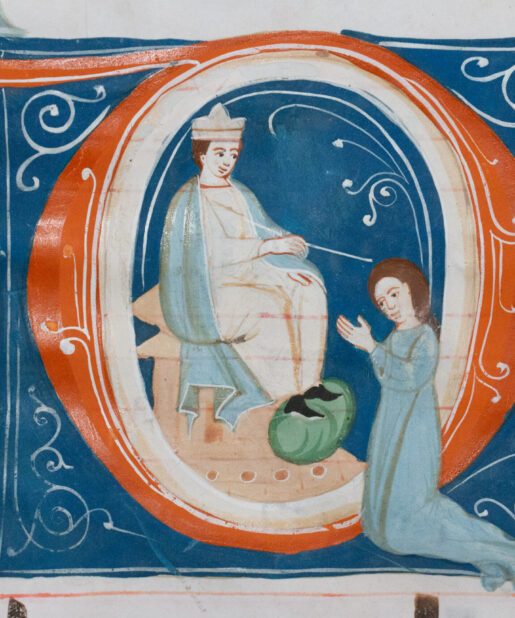
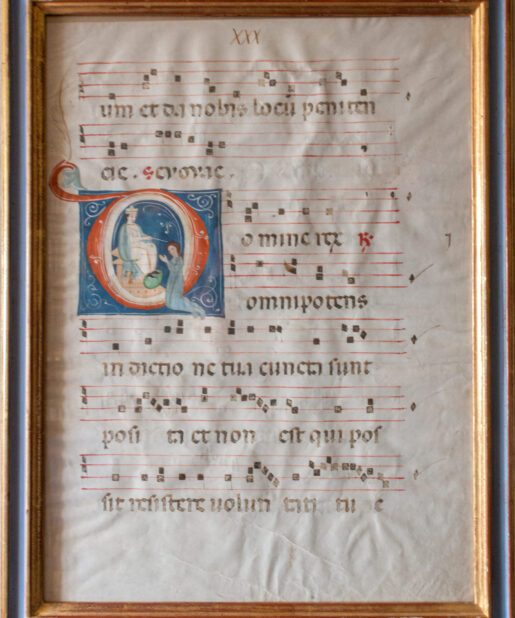
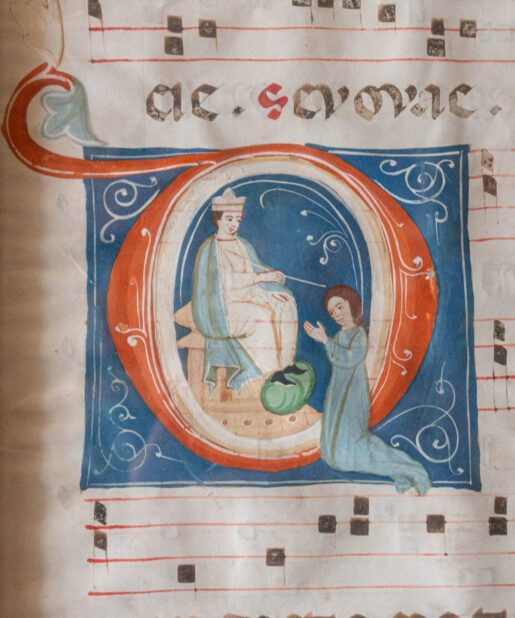
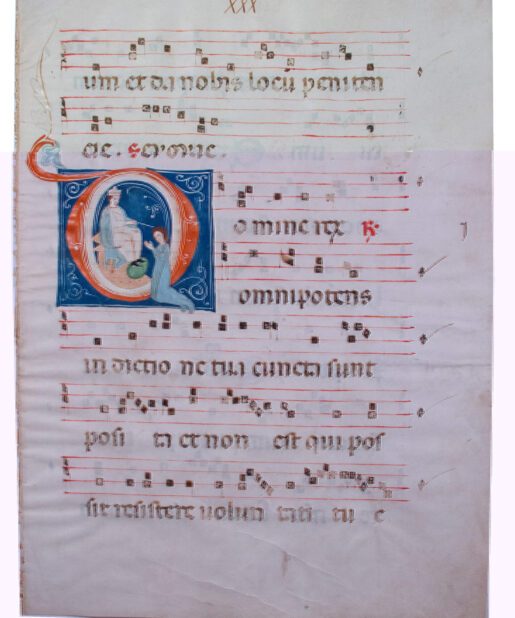
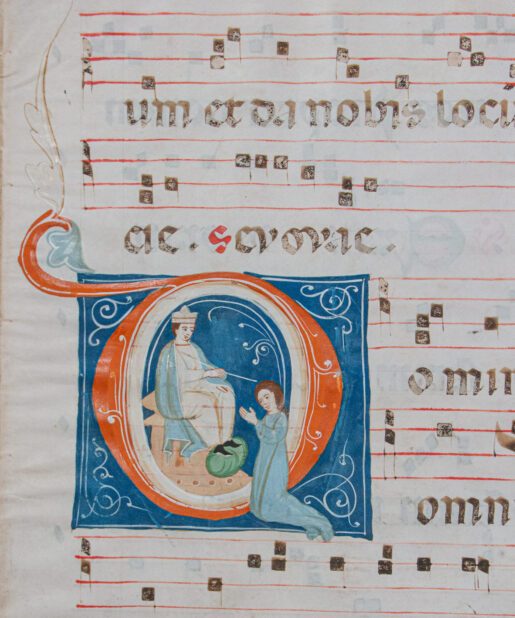
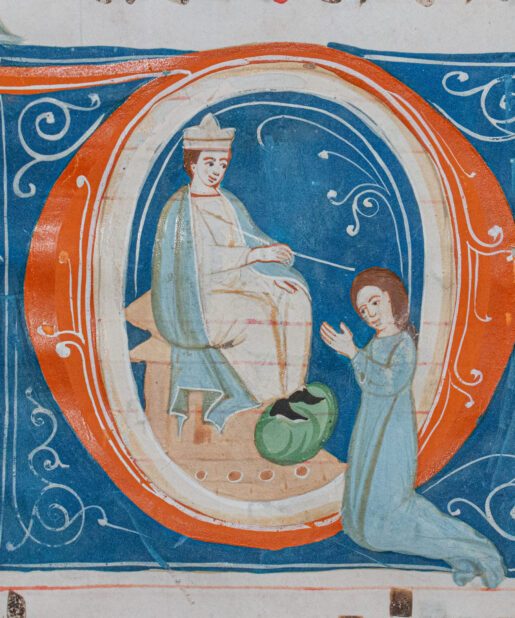
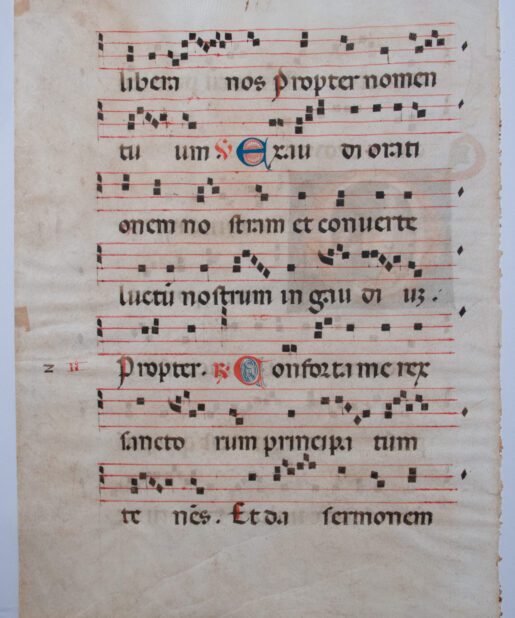
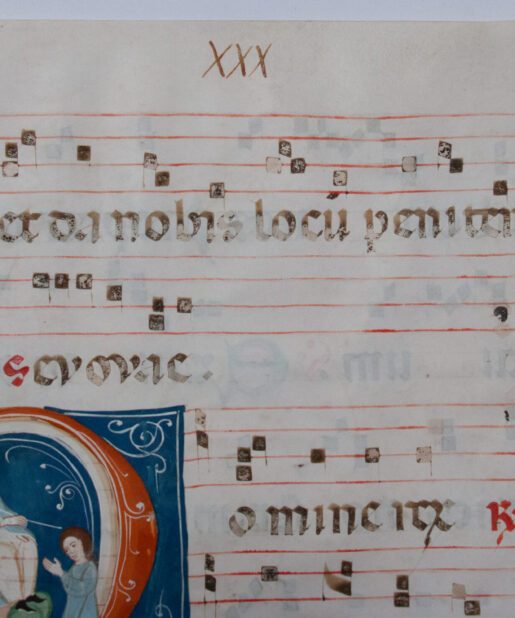
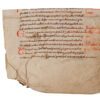
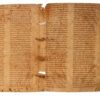
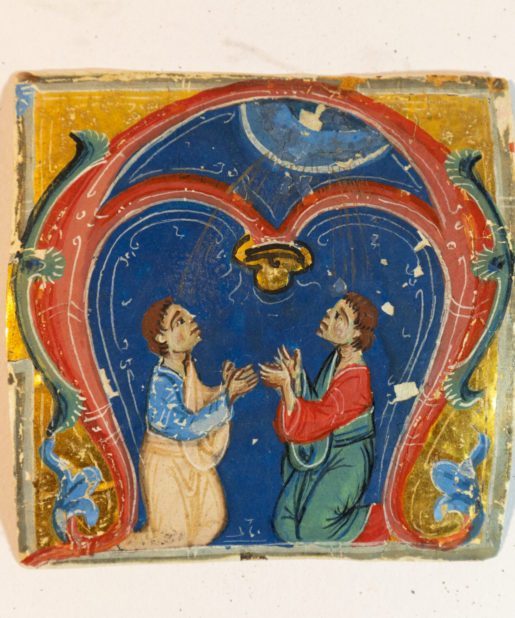
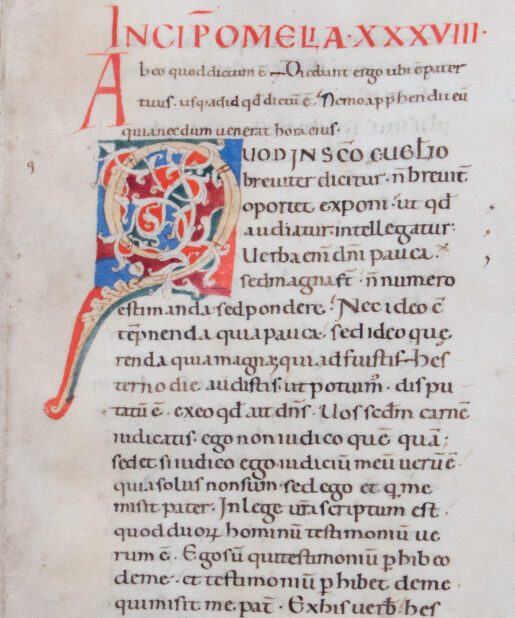
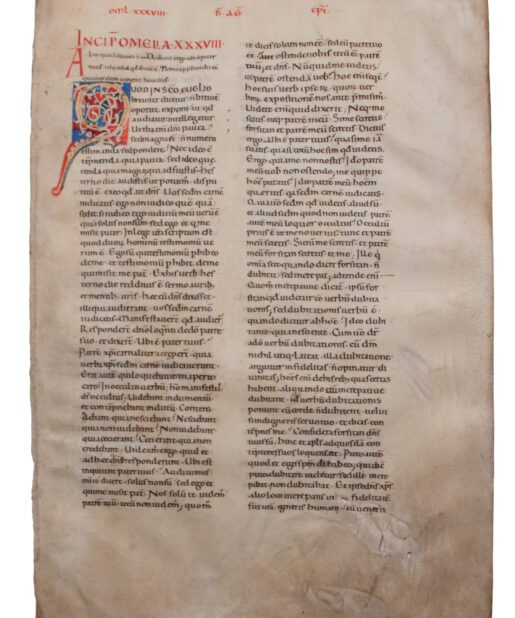
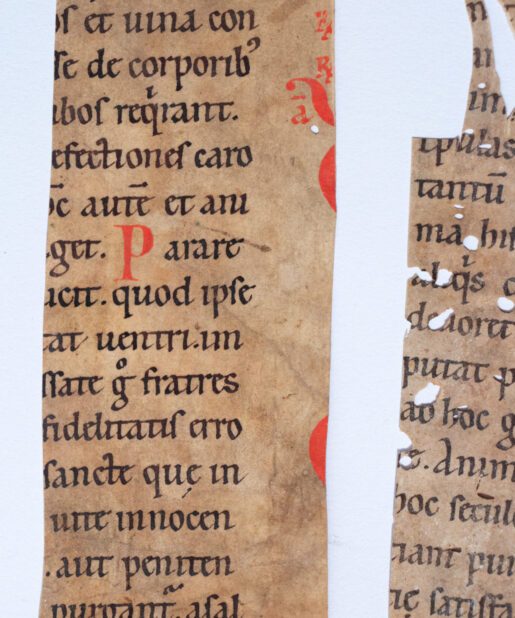
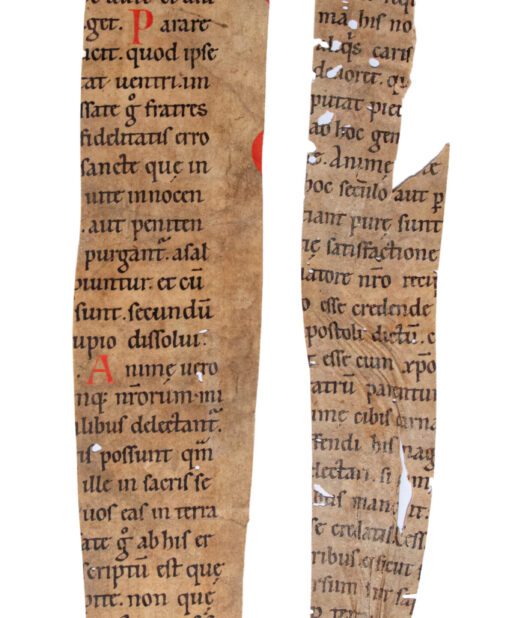
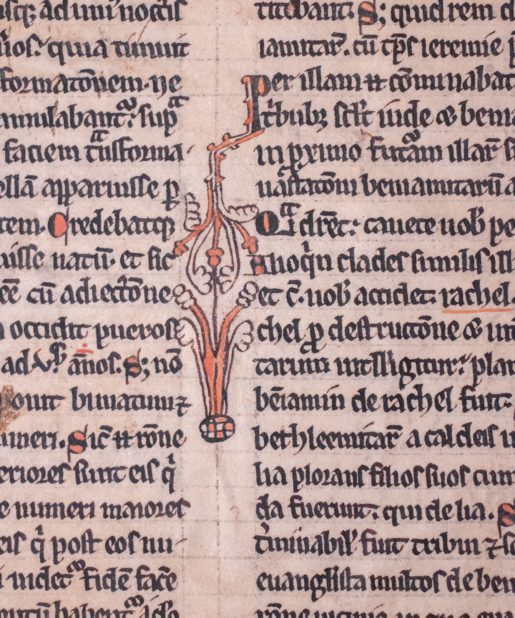
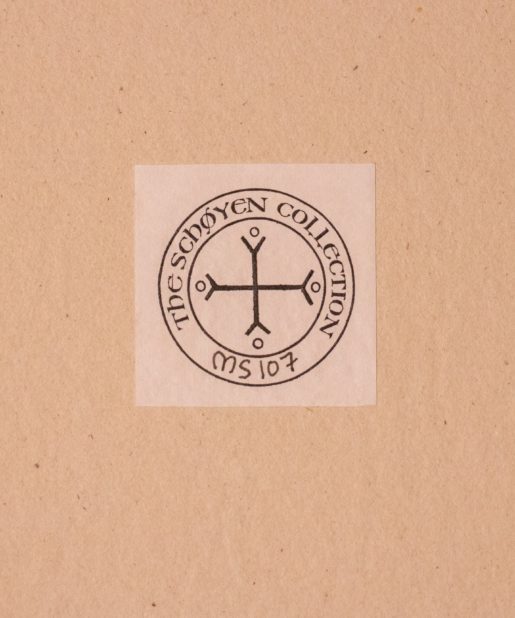
![Leaves from a portable Missal with a reading by Bede (his homily for the Feast of the Annunciation of the Virgin) in Latin, manuscripts on parchment. [England or low countries 14th century]. Leaves from a portable Missal with a reading by Bede (his homily for the Feast of the Annunciation of the Virgin) in Latin, manuscripts on parchment. [England or low countries 14th century].](https://butlerrarebooks.co.uk/wp-content/uploads/2023/06/IMG_9977-scaled-515x618.jpg)
![Leaves from a portable Missal with a reading by Bede (his homily for the Feast of the Annunciation of the Virgin) in Latin, manuscripts on parchment. [England or low countries 14th century]. Leaves from a portable Missal with a reading by Bede (his homily for the Feast of the Annunciation of the Virgin) in Latin, manuscripts on parchment. [England or low countries 14th century].](https://butlerrarebooks.co.uk/wp-content/uploads/2023/06/IMG_9975-scaled-515x618.jpg)
![A single leaf; Augustine’s Enarrationes in Psalmos, for Psalm 41:6-8 [manuscript] A single leaf; Augustine’s Enarrationes in Psalmos, for Psalm 41:6-8 [manuscript]](https://butlerrarebooks.co.uk/wp-content/uploads/2021/06/IMG_2115-scaled-515x618.jpg)
![A single leaf; Augustine’s Enarrationes in Psalmos, for Psalm 41:6-8 [manuscript] A single leaf; Augustine’s Enarrationes in Psalmos, for Psalm 41:6-8 [manuscript]](https://butlerrarebooks.co.uk/wp-content/uploads/2021/06/IMG_2112-scaled-515x618.jpg)
![Saints Peter and Paul, in an illuminated historiated initial ‘N’, cut from a Gradual in Latin on parchment [Italy (Florence); 15th century (c.1470s)] Saints Peter and Paul, in an illuminated historiated initial ‘N’, cut from a Gradual in Latin on parchment [Italy (Florence); 15th century (c.1470s)]](https://butlerrarebooks.co.uk/wp-content/uploads/2022/02/IMG_6782-515x618.jpg)
![Saints Peter and Paul, in an illuminated historiated initial ‘N’, cut from a Gradual in Latin on parchment [Italy (Florence); 15th century (c.1470s)] Saints Peter and Paul, in an illuminated historiated initial ‘N’, cut from a Gradual in Latin on parchment [Italy (Florence); 15th century (c.1470s)]](https://butlerrarebooks.co.uk/wp-content/uploads/2022/02/IMG_6781-515x618.jpg)
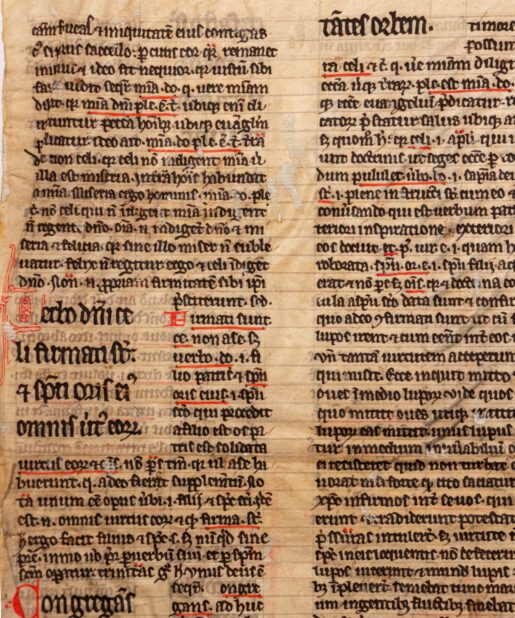
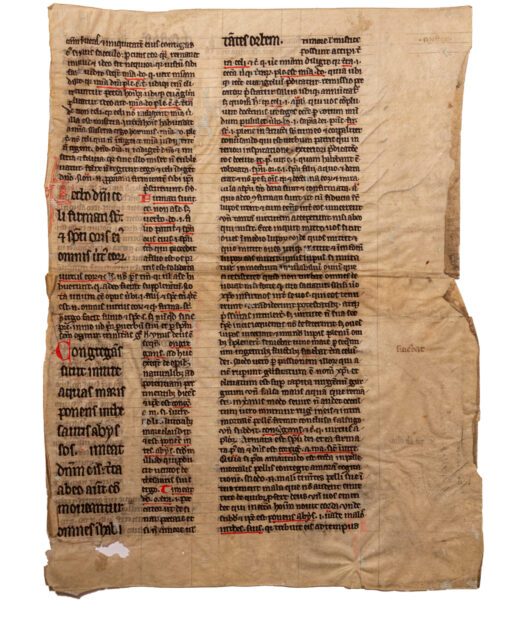
Reviews
There are no reviews yet.